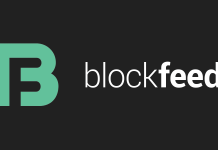NEM – New Economy Movement, is a cryptocurrency launched on March 21, 2015. NEM is built from the ground up, i.e. its computer programming is not copied from any other cryptocurrency. The currency symbol for NEM is XEM.
NEM is similar to other PoS (Proof of Stake) cryptocurrency, this is different from PoW (Proof of Work). Proof of stake enables stakeholders to secure the network while proof of work enables miners to secure it. Miners are computers which cryptographically engage each block created by the blockchain, in PoS system blocks are not processed this way. In PoS it is the stakeholders which determine the next block. NEM system is called POI or proof-of-importance Today ethereum uses PoW but it is scheduled to use PoS in the future.
NEM adds a twist to the POS system, by calcuating proof of importance (POI). This importance is determined in two ways. First the amount of time XEM has been in a wallet, 10% of this blance becomes vested every 1440th block. Secondly by the number of transactions during the last 30 days in account, this effect is increased when such transactions are done towards other high PoI accounts.
NEM coins came into existence when 1,500 stakeholders each received 5,999,999 XEM. Other funds were distributed to multi-sig wallets with the intention of distribution for NEMs development and rewards. NEM is written in Java and JavaScript. Every block takes 60 seconds to be created and the confirmation count is variable, Poloniex has a confirmation count of 18.
NEM Cryptocurrency Strengths and Opportunities
- Scaling: NEM was designed from the ground up to scale. Scale for transaction speed and transaction volume, NEM can handle 3,000 transactions per second.
- In order to open a NEM account, a user only needs to download the wallet, this is a great advantage to those who cannot access banking services. NEM has the facility of Multi-Sig accounts, their advantage is that their funds can only be spent when a minimum number of co-signatories sign a transaction from each of their wallets. This functions similarly to a joint bank account. NEM Wallets can also be single sing wallets, only one person has access to the account. This advantage is common with 99% of cryptocurrencies.
- Transaction fees are cheap at 0.1% fee of the transaction amount.
- NEM transactions are completely traceable, which could be an advantage. Consider the recent spasms from the European Parliament about anon crypto coins, NEM could have an advantage. IMHO, this matter is not priced in the markets at this time. On the other hand, not all NEM users live in a country where freedom of thought and expression is practised by Western standards.
See more: ECB’s opinion on new aws concerning Virtual Currency by the EU - NEM has an encrypted messaging feature. Sending messages costs 1 NEM per 32 characters and take around 17 seconds to be recevied. Such messages are also included with the blocks, thus are dependent on the block time to be included in the block chain which takes a maximum of 60 seconds. Encrypted message time in NEM varies.
- NEM is a deflationary coin only 8,999,999,999 will ever be in existence, similar to Bitcoin, Dash and Crown there is no chance of inflation, on the other hand, PIVX has an inflation rate of around 3,000,000 PIVX a year.
- NEM uses 100 times less electricity than bitcoin, this makes it cheaper to maintain and is good for the environment. In this way, Bitcoin price is tied to the oil price, and the oil price is tied to the economic production. The more demand for oil the higher the oil price. A certain percentage of electricity is created through renewables which might be cheaper but not free.
See More: Bitcoin mining costs $400 million a year
- Like most cryptocurrencies, it is possible to have a brain Wallet with NEM i.e. a wallet can be recreated through a series of memorised seed words.
- The NEM blockchain allows for the creation of namespaces and subdomains. Once created namespaces, allow for the creation of mosaics.
- Mosaics are NEM sub assets, the creation of these sub assets requires the rental of a root namespace. These assets can be customised further and transferred as attachments to messages.
- NEM will receive a Software upgrade codenamed Catapult.
See more on: NEM and Catapult - Supernodes are servers which play an important role in the NEM network, they function as Peers of the Network and are tested and verfied on a daily basis.
- In order to set up a supernode, a user needs 3,000,000 NEM. These servers are continually tested for their capacity, bandwidth and processing power. Theses supernodes service light wallets. As of 17/04/2017, 603 nodes running. See more: List of NEM supernodes and Graphical view of NEM nodes around the world.
- NEM can incorporate much of the functionality of Emercoin.
- It is possible to delegate harvesting in NEM. To do this a user needs 10,000 NEM vested and the advantage is that users can stake while their PC is off.
- The concept of PoI is associated with Proof-of-Importance, whereby the more NEM a user holds the more important he/she is to the NEM network. The importance means that the more rewards or harvesting that user should receive. Transferring of these assets can occur as attachments through messages. A fee on top of the standard fee is applied when moving mosaic assets. Read in more detail here: How Local and Delegated Harvesting Works
- Nem provides the facility to Apostille (notarize) a file similar to what Factom is doing. Read more: Move over Factom, Apostille is coming
- NEM has a community fund which is similar to Dash’s treasury fund. This fund is fixed amount and at this time is not replenished. Applications for use can be done here:
NEM Community Fund DAO - NEM has a system of spam protection, whereby accounts who use more of the system resources of the NEM network will get higher fees. This rise in fees is restricted to the high volume accounts. Such an attack is not possible to defend against in Bitcoin.
- Nodes in NEM get harvesting while those in Bitcoin do not. The incentives to maintain a network of nodes are aligned in the interest of the node holders in NEM but not in Bitcoin.
Weaknesses and Threats of NEM
- NEM’s threats are other competing cryptocurrencies
- A government crackdown on Cryptos. NEM is not an anonymous coin so it has less likelihood of being directly targetted.
- Lack of mainstream adoption by everyday users.
- A lack of a sustainable development fund which ensures the long-term adoption and development of the fund.
- I could not find any information on the initial 1,500 NEM stakeholders. scintillate of their existence can be probably be found on the NEM richlist.
- Information such as: what each individual holder has done with the coins,
- what each individual holder has done with the coins,
- if they have paid for them or got them for free
- what price have they paid for them
- Information such as: what each individual holder has done with the coins,
- The issue of the NEM “instamine” is not given enough attention by the community. An effort should be done to deal with this issue before NEM becomes more mainstream and these questions could pose a barrier to the potential everyday NEM user. There are different kinds of instamines, some are pure “theft” while others are the best possible solution given the possibiliities. In NEMs case, probably, the distribution to the special 1,500 was the best method to launch NEM at the time.
Conclusion:
I like NEM, it is a strong crypto which has heritage (by Crypto standards). The value of PoS coins is recently being recognised more. NEM has some features which are not utilised to there full potential. The issue of the NEM instamine gives me an itch, I cannot get rid of – but not all projects are perfect and weighing all the pros and cons NEM does have potential.












